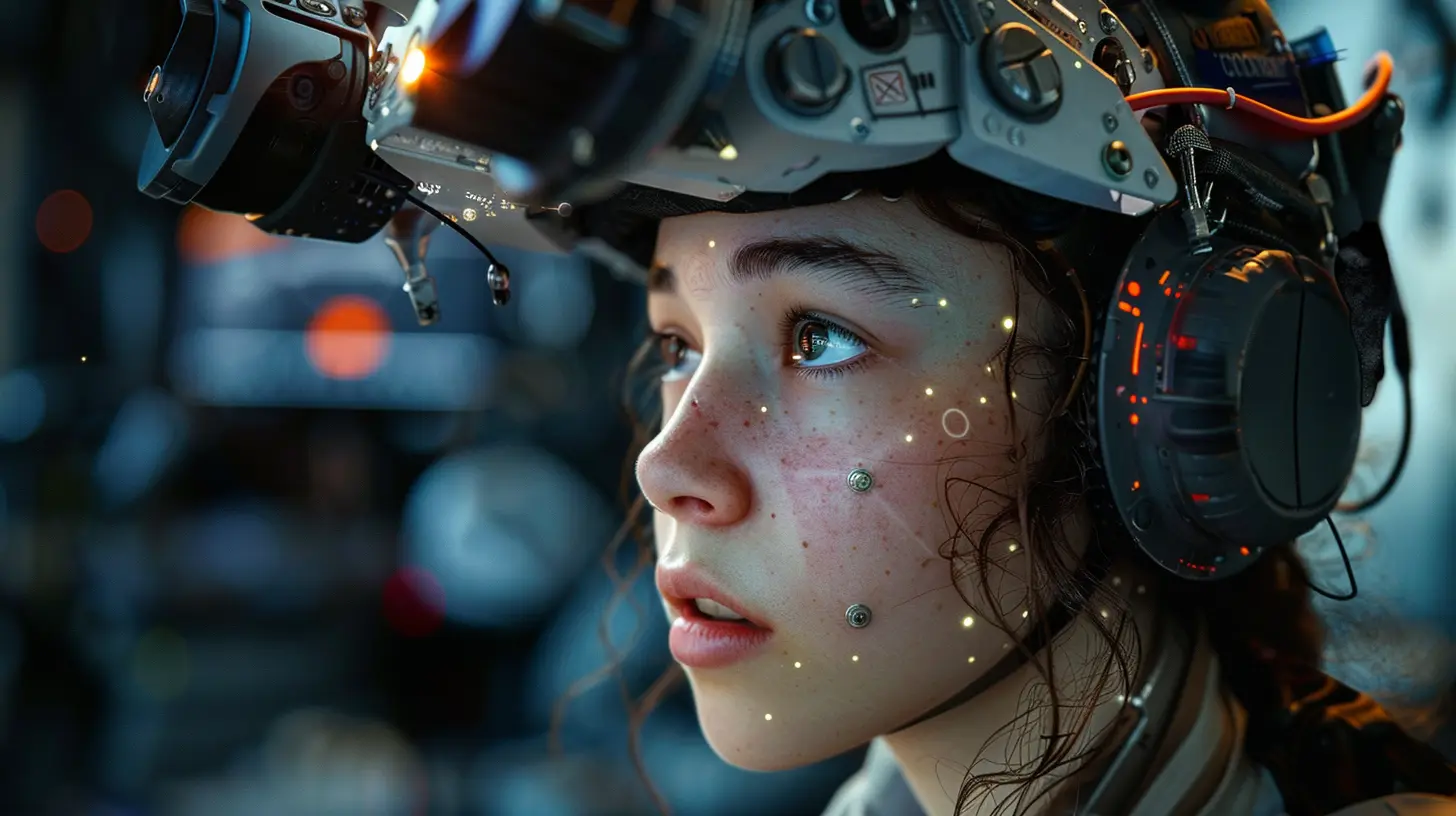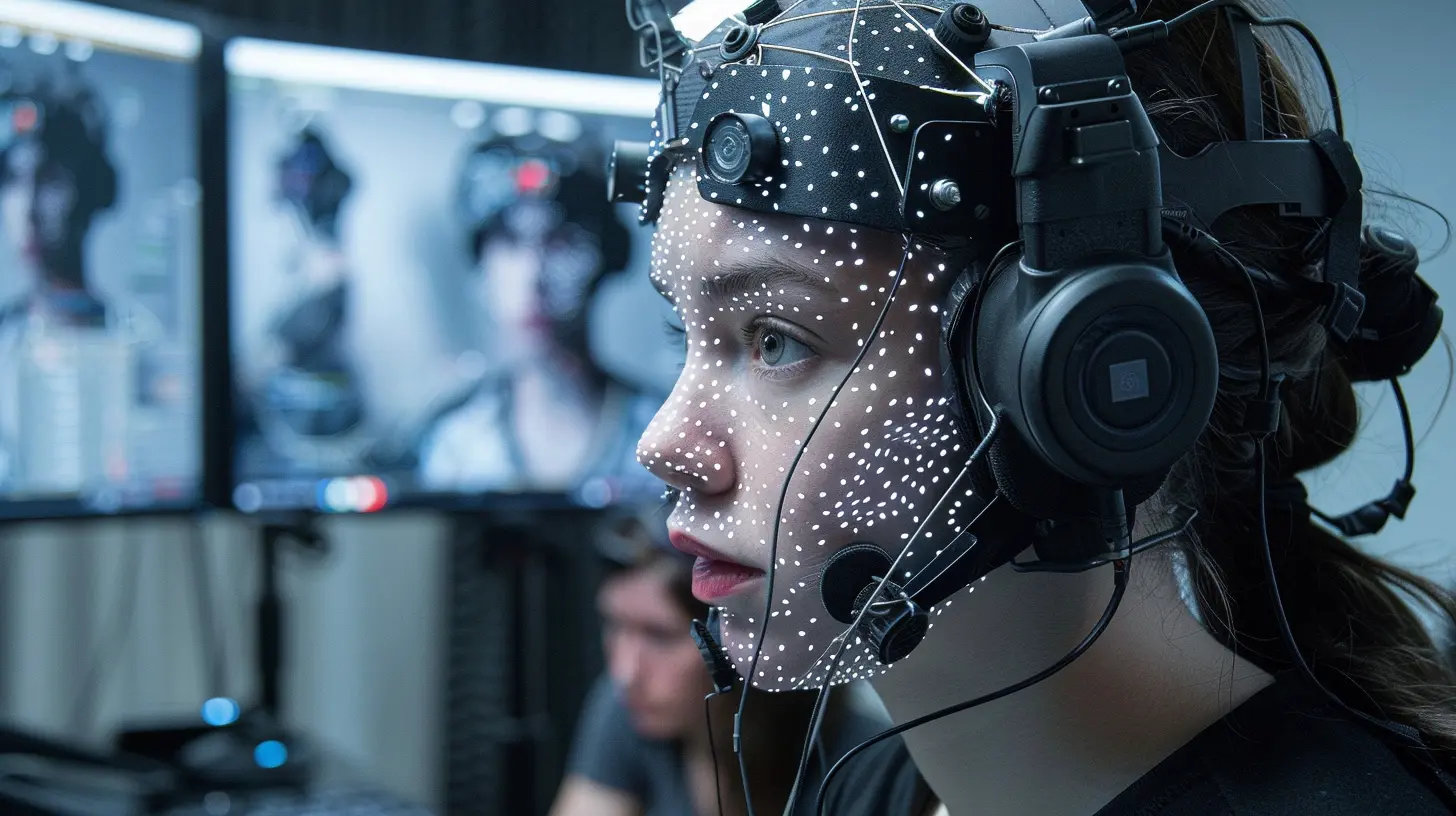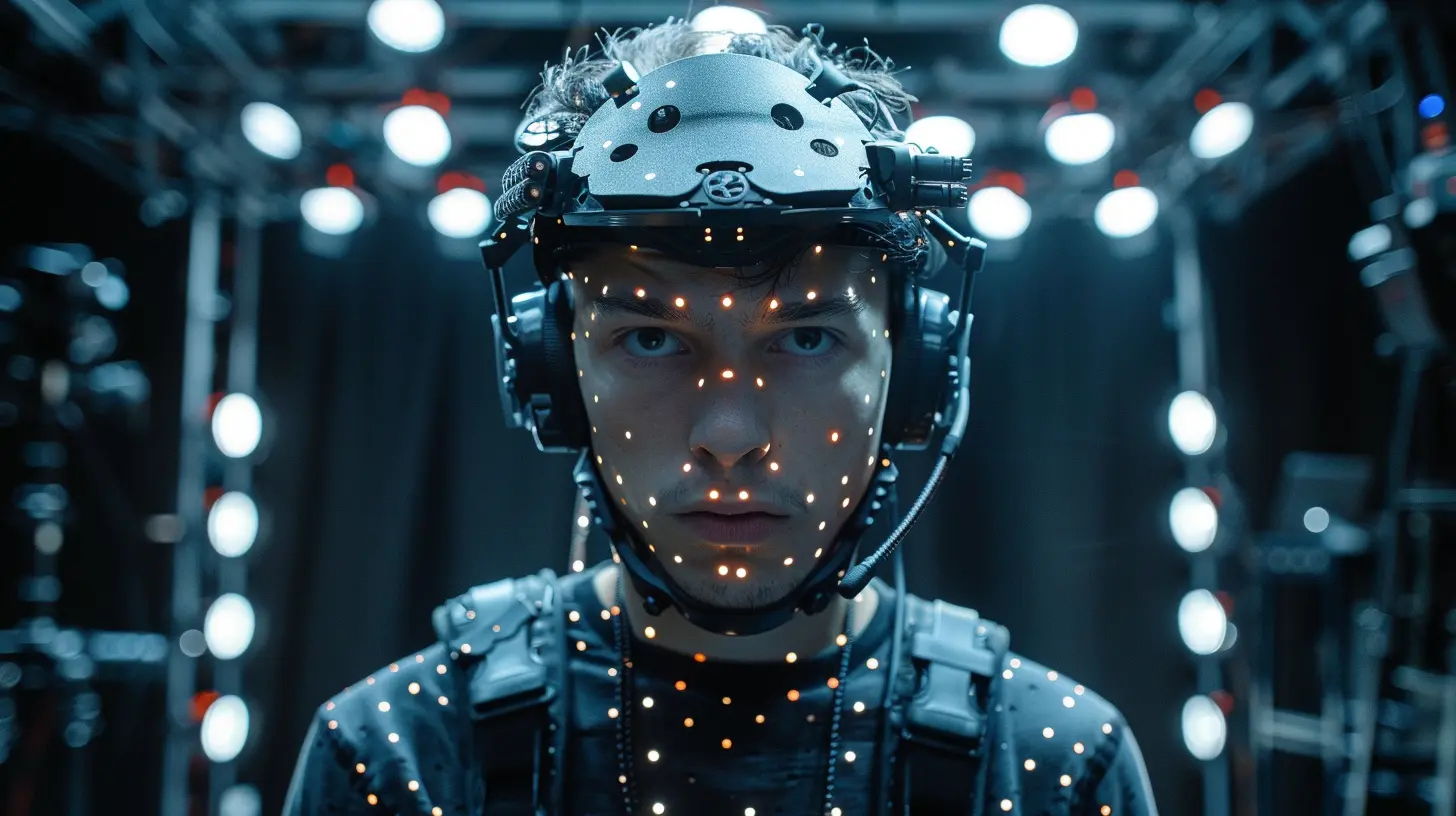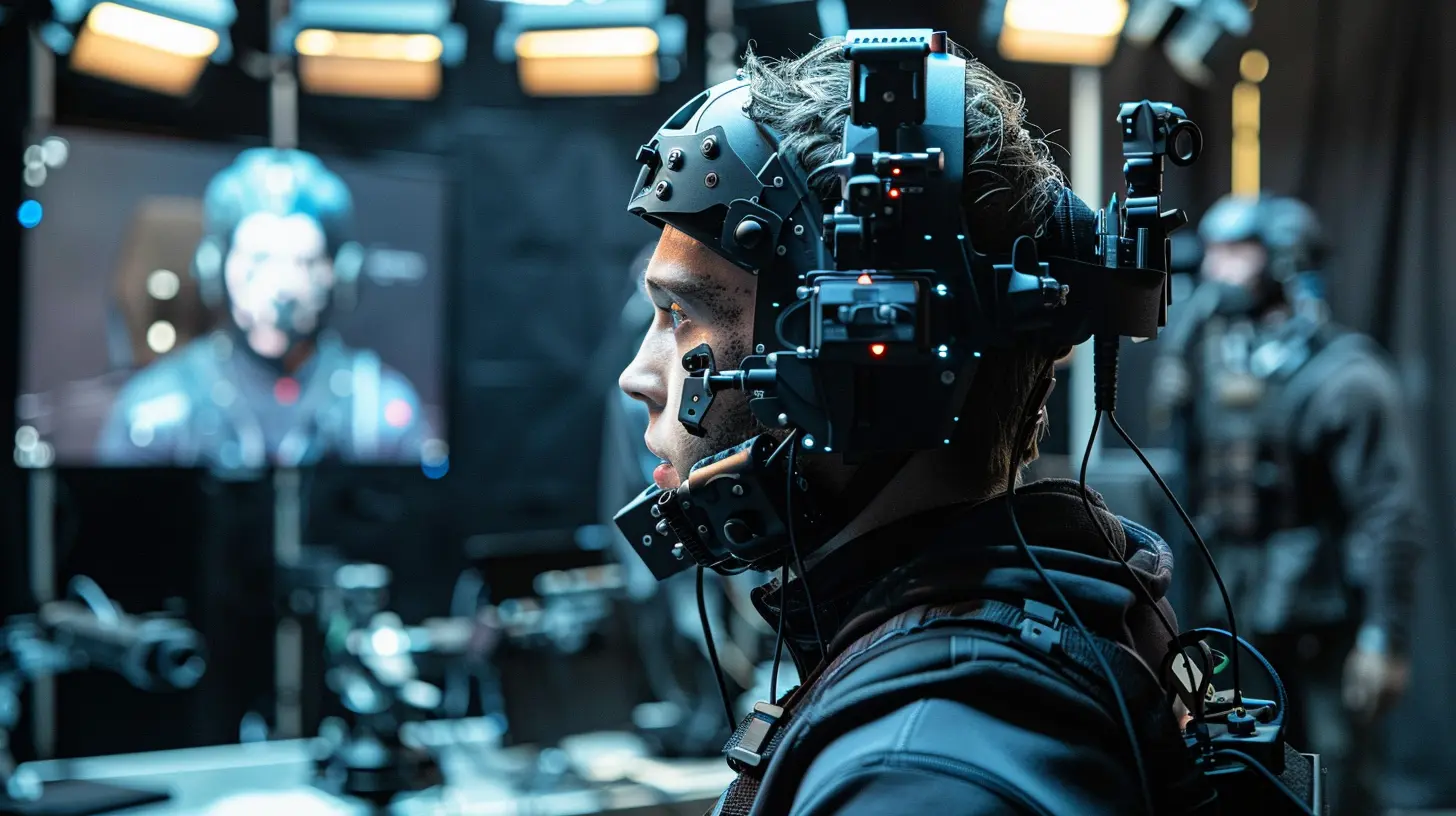Bridging the Gap: The Transition from Voice Acting to Motion Capture
17 January 2025
When it comes to gaming, most of us think about jaw-dropping graphics, immersive storylines, and mechanics that make us forget we’ve been sitting for hours. But let’s take a second to appreciate something we often overlook: the role of voice acting and motion capture. These two art forms are the unsung heroes of modern gaming, breathing life into characters and making them more believable than ever before.
Voice acting has long been a staple in gaming—giving heart, soul, and personality to characters we love (and love to hate). But as technology advanced, a new frontier was introduced: motion capture (or "mo-cap" for short). For voice actors, stepping into the world of motion capture is like switching from driving a car to piloting a spaceship. It’s still about getting from point A to point B, but the skills required are a whole different ballgame.
So, why is the shift happening? What challenges do voice actors face when making the jump to motion capture? And what does this mean for the gaming industry as a whole? Let’s dive into the nitty-gritty of transitioning from the booth to the stage, where every movement is under the spotlight. 
From the Booth to the Volume: A Paradigm Shift
Picture this: You’re a voice actor. You step into a cozy recording booth, headphones snug over your ears, script in hand. You deliver lines with precision, nailing every bit of emotion. Now imagine trading that serene environment for a massive, empty volume (essentially a soundstage), covered in shiny markers with cameras capturing your every move. Oh, and did I mention you’re in a skin-tight motion capture suit? Talk about a glow-up (or maybe a glow-down, depending on your love for spandex).The transition from voice acting to motion capture isn’t just about wearing a suit and learning how to move. It’s a complete shift in how you approach performance. Voice acting is focused on vocal delivery—nuance, pacing, tone. Motion capture? It’s a full-body performance. You’re not just delivering lines; you’re expressing emotion through your posture, gestures, and even the tilt of your head.
In voice acting, your face and physical quirks don’t matter—it’s all about how your voice connects with the player. But in motion capture, your entire body becomes the instrument. It’s like going from being a guitarist to becoming a one-person band. Every movement has to be deliberate. Every expression has to align with your voice. The result? A character that feels undeniably real. 
The Unseen Challenges
1. Stage Fright in a Digital World
For many voice actors, being heard but not seen is a comfort zone. There’s a certain anonymity in voice acting—your face isn’t out there, allowing you to focus entirely on vocal performance. But in motion capture, there’s no hiding. You’re being recorded from every angle, and every little movement (or lack thereof) is on full display.This sudden visibility can be intimidating, especially for those who’ve thrived behind a microphone. Imagine going from being a shadowy storyteller to stepping into a spotlight where every blink of your eye is scrutinized. It’s a vulnerable place to be, and not everyone adjusts to it seamlessly.
2. Mastering Physicality
Ever thought about how differently you move when you’re sad versus when you’re angry? Or how you naturally puff out your chest when you’re feeling confident? These little details are what motion capture artists have to nail. And for voice actors, this level of physicality might not come naturally.In the booth, a voice actor can focus entirely on the sound of their voice. But in the “mo-cap volume,” their body language must match their lines. It’s like acting in a play but without the costumes, props, or scenery to guide you. The learning curve can be steep, requiring not only acting chops but also an awareness of space and movement. 
The Learning Curve
1. Acting Meets Athletics
Motion capture often involves intense physical activity. Whether it’s running, jumping, or performing combat sequences, actors need a certain level of physical fitness to keep up. It’s one thing to embody an angry warrior with your voice—it’s another to physically swing a sword while delivering those same lines.Some actors even undergo training in martial arts, dance, or body language to prepare for these roles. It’s no longer just about acting—it’s about becoming an athlete-actor hybrid.
2. Adapting to Technology
Let’s not forget the tech. Most voice actors are used to working with a microphone and headphones. But in motion capture, there’s a whole new world of equipment to deal with. Facial capture rigs, motion sensors, and head-mounted cameras are just the start.These tools can feel alien at first, and they add another layer of complexity to the performance. Imagine trying to act while wearing a helmet with a camera pointing at your face—it’s like trying to emote while wearing a bulky VR headset. Learning to ignore the tech and focus on the performance is a skill in itself. 
The Rewards of Motion Capture
Despite the challenges, there’s a reason so many voice actors make the leap to motion capture. It offers a level of creative fulfillment that’s hard to match. Motion capture allows actors to bring their characters to life in ways that voice work alone never could.For many, the experience is incredibly liberating. It’s a chance to fully embody a character—to move, breathe, and feel as they do. And when the final product comes together, with your movements and expressions seamlessly integrated into a CGI character, the result is pure magic.
The Impact on Gaming
This evolution in performance art isn’t just about actors—it’s about the players, too. The shift from voice acting to motion capture has revolutionized how we connect with characters in games.Remember Ellie from The Last of Us? Or Arthur Morgan from Red Dead Redemption 2? Their performances weren’t just memorable—they were transformative. That’s because the actors behind them didn’t just voice the characters—they became them. Motion capture added a new layer of authenticity, making these characters feel like real people rather than digital avatars.
And let’s not forget the storytelling potential. With motion capture, developers can create nuanced performances where even subtle body language adds layers to the narrative. It’s a game-changer (pun fully intended).
What Lies Ahead
The transition from voice acting to motion capture is just the beginning. As technology advances, we’re likely to see even more innovations in performance capture. Virtual reality, AI-driven animations, and advanced facial recognition are just a few areas ripe for exploration.For actors, this means even more opportunities to push the boundaries of their craft. For us gamers? It means characters and stories that feel more immersive than ever before. It’s a win-win situation—all thanks to the artists willing to step out of their comfort zones and embrace the future.
Conclusion
Bridging the gap between voice acting and motion capture isn’t just about mastering a new skill—it’s about redefining what it means to perform. It’s about stepping out of the booth and into the spotlight, embracing vulnerability, and delivering performances that resonate on every level.While the transition is no easy feat, the rewards are undeniable. For voice actors, it’s a chance to evolve and expand their skillset. For the gaming industry, it’s an opportunity to create stories and characters that connect with players in deeper, more meaningful ways.
So, whether you’re a veteran voice actor considering the leap to motion capture or a gamer marveling at the magic behind your favorite characters, one thing’s for sure: the future looks bright. And it’s only going to get better.
all images in this post were generated using AI tools
Category:
Voice Acting In GamesAuthor:

Whitman Adams
Discussion
rate this article
9 comments
Summer Love
Exciting insights on how voice acting enhances motion capture performance and storytelling!
February 3, 2025 at 5:39 PM

Whitman Adams
Thank you! I'm glad you found the insights valuable. Voice acting truly adds depth to motion capture and enriches storytelling.
Flynn Frye
Voices lost, shadows rise.
January 27, 2025 at 3:44 AM

Whitman Adams
Thank you! It beautifully captures the essence of the transition—how voices transform into physical performances, blending artistry with technology.
Ivory Sanders
What a fantastic exploration of this exciting transition! It's amazing to see voice actors bring characters to life with movement too. Can't wait to see how these techniques enhance storytelling in future games! 🎮✨
January 22, 2025 at 4:19 AM

Whitman Adams
Thank you! I'm glad you enjoyed the article—it's an exciting time for storytelling in games! 🎮✨
Velvet Frank
Who knew that going from ‘You’ve got a great voice!’ to ‘Wow, you're a fantastic wiggler!’ would be such an epic career leap?
January 20, 2025 at 3:41 PM

Whitman Adams
It's fascinating how versatile skills can open new doors in performance!
Callisto Clarke
Great article! It highlights the fascinating blend of voice acting and motion capture, emphasizing how both skills enhance character authenticity in gaming.
January 20, 2025 at 6:00 AM

Whitman Adams
Thank you! I'm glad you enjoyed it and found the exploration of voice acting and motion capture insightful.
Darrow Vasquez
Great insights! It's inspiring to see how voice acting and motion capture combine to create truly immersive gaming experiences.
January 19, 2025 at 3:39 PM

Whitman Adams
Thank you! I'm glad you found it inspiring—blending voice acting with motion capture really enhances storytelling in games!
Wren Kearns
From voice to motion: actors now play hopscotch!
January 19, 2025 at 4:24 AM

Whitman Adams
Thank you for your comment! It's fascinating to see how actors are expanding their skills from voice work to embodying characters physically in motion capture.
Vance Erickson
This article highlights the evolving synergy between voice acting and motion capture, enhancing character depth and immersive storytelling in games.
January 17, 2025 at 6:00 PM

Whitman Adams
Thank you! I'm glad you found the article insightful. The integration of voice acting and motion capture truly transforms character portrayal in gaming.
Gabrielle McIlroy
Great insights! The evolution from voice acting to motion capture is fascinating.
January 17, 2025 at 4:08 AM

Whitman Adams
Thank you! I'm glad you found it fascinating—it's amazing to see how technology enhances storytelling in games and film!
MORE POSTS

The Rise of VR Multiplayer: Connecting Through Virtual Worlds
Hand Tracking in VR: The Next Step for Immersive Interaction

Virtual Reality and Accessibility: Making Games for Everyone

How Fan-Made Mods Keep Older Games Relevant

How Video Games Help Manage Anxiety and Stress

How Game Economies Shape Player Behavior

How Cloud Gaming Enables Instant Access to Titles